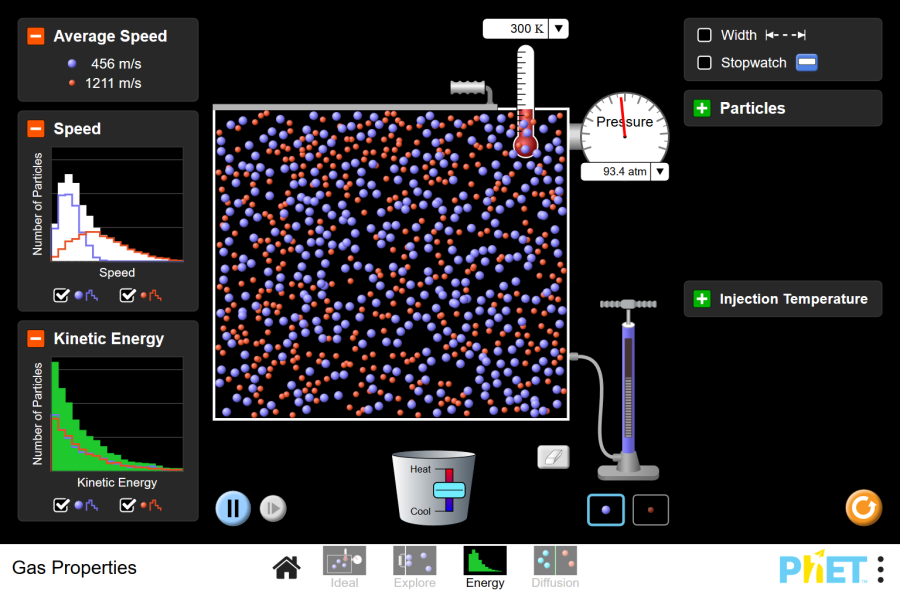The PhET program at the University of Colorado/Boulder has been making quality simulations since the 1990s. I don't recall the exact details of when I started crafting activities around them. But I know I chose to work PhET-based activities into my Conceptual Science lab manuals because I could count on them being universally accessible, free of charge.
Here are the activities I've written for sims involving fluids and heat.
Pool Cubes: Density [Density] at PhET
This was developed with PhET's original Density sim. The Density sim has since been updated to HTML5. I have not yet tested the activity instructions on the updated sim. In any case... In this activity, students rank items by mass, size, density, and to determine a density-based rule for floatation. This activity is included in the Conceptual Physics 12th edition lab manual at Pearson.
Pool Cubes: Buoyancy [Buoyancy] at PhET [Unavailable pending simulation update.]
This was developed with PhET's original Buoyancy sim. The Buoyancy sim is being updated to HTML5. I have not yet tested the activity instructions on the updated sim. In any case... Investigate the nature of the buoyant force and to see the role it plays in determining whether or not an object floats. The ability to use a variety of objects in the liquid and to vary the density of the liquid makes a number of scenarios possible. This activity is included in the Conceptual Physics 12th edition lab manual at Pearson.
Bouncing Off the Walls [Kinetic Theory] at PhET
This was developed with PhET's original Gas Properties simulation. When the sim was updated to HTML5, the since model changed. Adiabatic heating still happens under compression, but adiabatic cooling no longer occurs under expansion. Using PhET's Gas Properties sim, control and observe the behavior of gas particles (atoms or molecules) as modeled in a simulation to investigate properties of gas such as temperature and pressure.

No comments:
Post a Comment